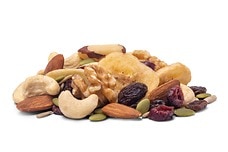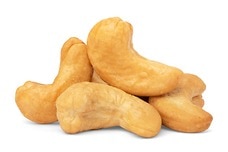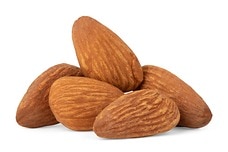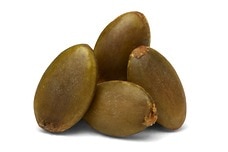DASH Diet
Nearly 70 million Americans suffer from high blood pressure (Centers for Disease Control and Prevention, 2015), with many more at risk for developing hypertension. One of the best ways to control high blood pressure is by modifying eating habits. The DASH diet is considered an excellent plan to reduce blood pressure and lower incidence of chronic disease. In fact, it is a healthy eating plan for nearly anyone, regardless of blood pressure risk.
What is the DASH Diet?
The DASH diet stands for “Dietary Approaches to Stop Hypertension.” It was developed by research scientists in collaboration with the National Heart, Lung, and Blood Institute [NHLBI] (n.d.). The DASH diet is a comprehensive eating plan designed to reduce blood pressure and help people lower LDL cholesterol levels.
Rationale Behind the DASH Diet
The body must keep the blood at a certain amount of pressure to allow it to pump back through the heart. At higher blood pressure, however, the cardiovascular system is under greater strain. Having hypertension increases risk of heart disease and other chronic health conditions. The DASH diet encourages foods that are rich in potassium, calcium, magnesium, fiber, and protein.
The DASH diet is designed to address several components that increase risk for hypertension (NHLBI, n.d.). First is the body’s salt balance. The kidneys work to keep the body’s salt levels in check by excreting potassium while retaining sodium. The DASH recommends limiting to sodium to 2300 milligrams per day or to 1500 milligrams per day to lower blood pressure further, paired with potassium-rich foods. The plan has the net effect of reducing blood pressure within the body.
The DASH diet also encourages intake of calcium-rich foods. Calcium is an important signalling molecule within the body. In particular, it is involved in regulating the renin-angiotensin-aldosterone system. These are hormones that increase and decrease blood pressure. Getting enough calcium keeps this system in balance.
Finally, the DASH diet is a high fiber diet and lower in saturated fat. LDL cholesterol forms sticky plaques in the blood vessels, making it more difficult for blood to flow and increasing blood pressure. This aspect of the diet works to lower levels of “bad” LDL cholesterol while raising levels of “good” HDL cholesterol (NHLBI, n.d.).
Guidelines for the DASH Diet
A good high blood pressure diet includes consumption of fruits, vegetables, poultry, fish, nuts, and whole grains. It limits the amount of red meat, saturated fat, processed foods, and sweets that you may consume. How many calories your body needs per day is based on age, gender, and activity level, and how many calories will adjust how many servings of each food group are recommended. Assuming a 2,000-calorie diet, the National Blood, Heart, and Lung Institute (n.d.) recommends the following servings the DASH diet:
- 7 to 8 servings of grains. Grains may include bread, pasta, cereal, quinoa, buckwheat, or bulgur wheat. At least half of your daily servings of grain should come from whole grains, which tend to be good sources of dietary fiber.
- 4 to 5 servings of vegetables. Vegetables may be consumed raw or cooked. Whenever possible, eat fresh vegetables prepared with minimal added fat. Canned or frozen vegetables are also acceptable.
- 4 to 5 servings of fruit. Eating plenty of fresh fruit increases your consumption of fiber, potassium, and other healthy nutrients. If choosing canned fruits, choose fruits canned in juice or water over those packaged with heavy syrup.
- 2 to 3 servings of dairy. Whenever possible, aim for nonfat dairy products such as milk, yogurt, or cottage cheese.
- 2 or fewer servings of lean meats, poultry, and fish. Limit intake of red meat as much as possible. Turkey, chicken, or fish are acceptable sources of protein.
- 4 to 5 servings of nuts, seeds, and beans per week. Nearly every day, try to eat at least one serving of nuts, seeds, or legumes. Nuts provide heart-healthy omega-3 fatty acids that can keep cholesterol levels in check.
- 2 to 3 servings of fats or oils. Opt for olive oil, vegetable oil, canola oil, or other fats high in polyunsaturated and monounsaturated fats.
- 5 servings of sweets per week. Limiting sweets not only reduces hypertension, but it also lowers risk of type 2 diabetes.
Research Evidence Supporting the DASH Diet
The DASH diet has accumulated great support in scientific literature as an effective high blood pressure diet. In an early clinical trial, people who followed the DASH diet experienced significant decreases in blood pressure (Sacks et al., 2001). Another study of more than 88,000 people found that the DASH diet was associated with significantly lower risk of coronary heart disease, stroke, and heart attack (Fung et al., 2008). In fact, this low sodium diet is touted as one of the most effective ways to reduce your risk of cardiovascular disease (NHLBI, n.d.).
Considerations When Choosing the DASH Diet
The DASH diet does take some adjustment from a typical American diet. It is best to start slow and gradually work toward the diet recommendations. Replacing salt with alternative spices, decreasing reliance on butter or margarine, and boosting fruit and vegetable intake are good places to start.
DASH Recipes
Sustaining a restrictive diet is made much easier when you have recipes that fit the bill with a flavor and feel you really enjoy. We hope the following concoctions confer a strong base to build your new, healthier life.
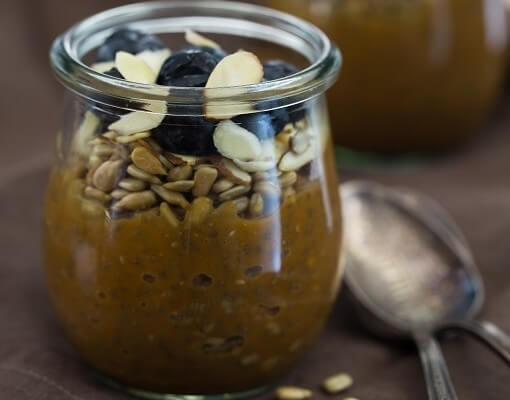
Pumpkin Chia Seed Pudding Recipe
This piquant pumpkin pudding provides a perfunctory path to a healthy breakfast. Each serving of the dish offers 4 grams of fiber, 5 grams of protein and more than the full Daily Value (DV) for vitamin A. Enjoy the perfect palate provided by the plate any season and discover the effects of healthy eating today.
Ingredients: Milk, pumpkin puree, chia seeds, maple syrup, pumpkin spice, sunflower seeds, sliced almonds, fresh blueberries.
Total Time: 10 minutes
| Yield: 4 servings
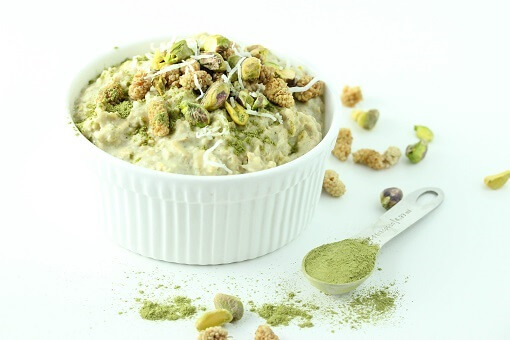
Moringa Oatmeal Recipe
Mix it up in the mornings with another nutritious breakfast that is as delicious as it is wholesome. This superb hot cereal is full of all the nutrients you need to start your day, from a hearty helping of both fiber and protein with more than 12 grams each to an impressive reserve of vitamins and minerals that accounts for 40% or more of the DV for iron, vitamin C, and calcium.
Ingredients: Gluten-free rolled oats, almond milk, agave or maple syrup, vanilla extract, moringa powder, pistachios, dried mulberries, unsweetened shredded coconut, chia seeds.
Total Time: 10 minutes
| Yield: 4 servings

Kale Quinoa Salad Recipe
Don’t compromise when it comes to flavor while eating healthy; select a salad with a rich blend of vegetables and grains that is seasoned to perfection with a classic blend of olive oil and vinegar. This kale and quinoa combination also does just that with healthful helping of essential nutrients, including: 7 grams of fiber, 14 grams of protein, 22% of the DV for potassium, 16% of the DV for vitamin C, 32% of the DV for iron, and more than 50% of the DV for vitamins A and C.
Ingredients: Quinoa, fresh baby kale, purple cabbage, carrots, fresh dill, boiled eggs, rice wine, extra virgin olive oil, black pepper.
Total Time: 25 minutes
| Yield: 8 servings
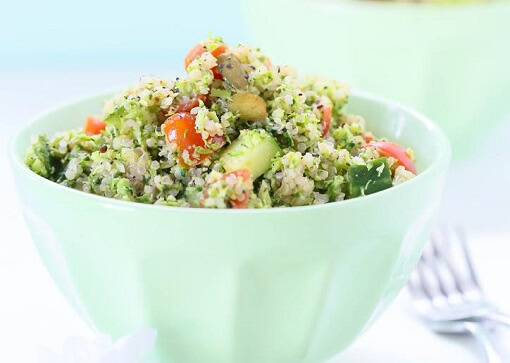
Broccoli Quinoa Salad Recipe {gluten-free}
A similar salad that is dressed with a palpably piquant blend, this recipe substitutes one superfood for another along with other beneficial fruits and veggies to create a medley of mouthwatering portions. The result is a familiarly impressive list of nutrients including more than 20 grams of both fiber and protein in each serving, as well as a hearty supply of the vitamins and minerals your body needs.
Ingredients: Fresh broccoli, quinoa, cucumber, cherry tomatoes, raw pumpkin seeds, sea salt, black pepper, Dijon mustard (optional), vinegar, extra virgin olive oil, maple syrup.
Total Time: 1 hour
| Yield: 8 servings
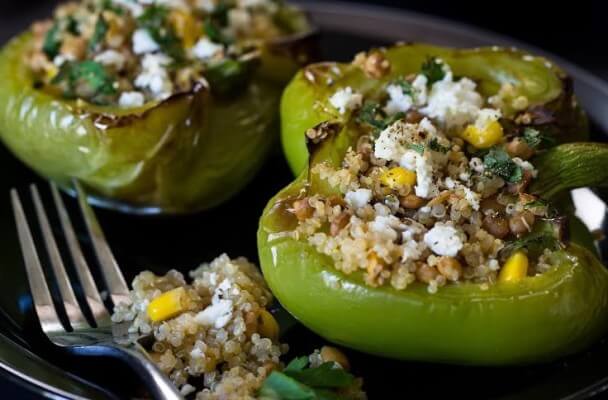
Quinoa Stuffed Peppers Recipe {gluten-free}
A rich repository of taste, vitamins, protein, and fiber- these stuffed peppers make a perfect party appetizer or a suitable lunch or dinner. The dish itself is supremely scrumptious with feta cheese and a blend of foods filling the pepper with fresh take on familiar flavors. The result of the mix is a shockingly healthful dish with more than 27 grams of fiber, 30 grams of protein, and an abundance of potassium, vitamin A, vitamin C and iron- in addition to other essential vitamins and minerals.
Ingredients: Quinoa, green bell peppers, canned lentils, fresh spinach, feta cheese, frozen corn (thawed), salt, black pepper.
Total Time: 40 minutes
| Yield: 6 servings (8 half-peppers)

Healthy Vegan Chocolate Truffle Recipe
It’s not too good to be true- you can enjoy a healthy chocolate truffle on occasion, particularly when it’s prepared the right way. These truffles are made with delicious dates to supply a naturally soft, sweet center. The rest of the ingredients are also natural, resulting in a vegan and gluten-free dessert that is surprisingly wholesome. At only 70 calories a piece and 1.5 grams of unsaturated fats- these treats supply a good go-to when that sweet tooth strikes.
Ingredients: Jumbo Mejdool dates, almond flour, chia seeds, flaxseed meal, cacao powder, agave or maple syrup, almond milk, unsweetened shredded coconut.
Total Time: 15 minutes
| Yield: 24 truffles
DASH Snacks
These superb snacks offer superb savors with a nutrient profile that accommodates the constraints of the DASH diet to help keep you healthy when the urge to eat appears.
Healthy Eating
- Healthy Snacks
- Healthy Highlights
- 5 Uses for Cacao Powder
- 5 Ways to Eat Farro
- 6 Best Gluten-Free Foods
- Alcohol and the Body
- Almond Flour Recipes
- Anti-Aging Superfoods
- Beat the Afternoon Slump
- Benefits of a Plant-Based Diet
- Benefits of Baobab
- Benefits of Cashews
- Benefits of Coconut Oil for Hair
- Benefits of Coconuts
- Benefits of Dates
- Benefits of Fenugreek
- Benefits of Garcinia Cambogia
- Benefits of Goji Berries
- Benefits of Kale Chips
- Benefits of Monk Fruit Sweetener
- Benefits of Peanuts
- Benefits of Pecans
- Benefits of Pistachios
- Benefits of Pumpkin Seeds
- Benefits of Spelt Flour
- Benefits of Steel Cut Oats
- Benefits of Sunflower Seeds
- Benefits of Tiger Nuts
- Benefits of Turmeric
- Benefits of Walnuts
- Benefits of Wheatgrass
- Best Food Fads
- Cacao vs Cocoa
- Caffeine-Free Energy Foods
- Chocolate That's Good for You
- Diet vs. Exercise
- Fat Burning Foods
- Food Myths Debunked
- Foods for Bone Density
- Foods for Colon Health
- Foods for Healthy Hair
- Foods for Healthy Skin
- Foods to Help Sleep
- Foods to Reduce Stress
- Green Tea Benefits
- Healthy Baking Flours
- Heart Healthy Habits
- High Protein Health Risks
- How to Boost Your Metabolism
- How to Lose Weight While Aging
- How to Throw a Vegan BBQ
- Kaniwa vs Quinoa
- Little Health Foods
- Low-Carb: Fad or Friend?
- Making Healthier Desserts
- Mediterranean Diet Meal Plan
- Natural Beauty Products
- Nuts for Weight Loss
- Preparing Vegan Meals
- Preventing Muscle Degeneration
- Rare Superfoods
- Reduce Sugar Intake
- Save Time By Going Vegan
- Smarter Snack Swaps
- Smoothie Ingredients
- Soy Protein vs Whey Protein
- Starting a Plant-Based Diet
- Steel Cut vs Rolled Oats
- Sugar Substitutes
- Vegan Proteins
- Vegan Substitutions for Fall Recipes
- Why Go Vegan
- Healthy Meals
- Healthy Recipes
- Sports Nutrition
- Vitamins, Minerals & Nutrients

